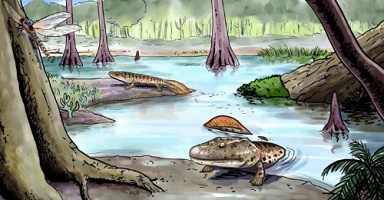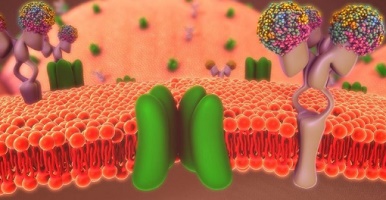What are the plants?
We explain everything about plants, their classification, parts, reproduction and other characteristics. Also, what is photosynthesis.
-
What are the plants?
Plants are living beings that are members of the plant kingdom or phylum plantae . These are autotrophic organisms , devoid of movement capacity , and mainly composed of cellulose. Trees, weeds, grass, algae and shrubs are all members of this realm of life.
What we know today as plants descend from the first eukaryotic and photosynthetic algae that appeared on Earth approximately 1500 million years ago : Primoplantae ( Archaeplastida ), product of the symbiosis between a eukaryotic protozoan and a cyanobacterium.
The first chloroplast and the possibility of photosynthesis as an energy process emerged from this ever closer collaboration . It was so that these primitive algae conquered the sea and then colonized the land, where evolution made them ferns, shrubs, trees and other plant forms that we know today.
Thus, although they originated in water, there are plant species in virtually all habitats in the world, as long as there is water and sunlight . Even in hot deserts (such as the Sahara) and frozen deserts (such as Antarctica), plant species adapted to adverse weather conditions can be found.
-
General characteristics of the plants
Three common and fundamental features characterize plants, shared by all species of the kingdom without distinction:
- Autotrophic nutrition , which means that they generate their own food from inorganic matter ( water and soil and air substances ) and sunlight (ultraviolet radiation). This complex carbohydrate manufacturing process is known as photosynthesis.
- Absence of locomotion , that is, they are beings unable to move at will (as opposed to animals). Some of them change habitat at the mercy of the waters (algae and other aquatic plants).
- Cells equipped with a cell wall , that is, that their cells have a rigid cellulose structure that covers their plasma membrane , giving them hardness, resistance, but slowing and slowing the growth process.
-
Plants types

In general, it is possible to differentiate plants into two large groups: 1) green algae and 2) terrestrial plants . The first group is much earlier than the other evolutionarily, and for that reason some scholars include them within other realms of life; but when performing photosynthesis, they act fundamentally as plants.
Terrestrial plants, at the same time, fall into two different categories:
Vascular land plants . Known as “upper plants”, they have a complete body structure: stems, roots, leaves and internal transport mechanisms (vascular mechanisms) that communicate their organs and travel the distance of their stems. At the same time, the upper floors are divided into:
- Pteridofitas . Upper seedless plants, commonly known as ferns. They have long, curled leaves known as fronds, and can grow to a considerable size.
- Espermatofitas . Upper plants with seeds, after ferns in the evolutionary tree. This group is made up of angiosperms (colorful flower plants and a lot of pollen) and gymnosperms (woody plants), and is the predominant group on the planet.
Non-vascular land plants . Plants that do not have internal vascular structures, so they do not have a clear division between stem, root and leaves, nor reach much size. They are a group halfway between ferns and algae, such as bryophytes, for example, commonly known as moss.
-
Parts of a plant

Depending on the type of plant, it may have one or other structures. But broadly speaking, plants are made up of:
- Root . The fundamental organ of all types of plants, which serves to absorb water and nutrients from the environment in which they are found, whether liquid or solid. Generally the roots do not usually see the light , and they grow in a rhizomatic way, that is to say, disorderly. In their structures, in addition, nutrients and emergency substances are usually stored.
- Stem . The stems are aerial extensions of the plant, which grow in the opposite direction from the root and generally have a system of conductive vessels to transport the sap and nutrients to the other organs, such as the leaves. In addition, the stem provides structural support to the organism, because from it they are born, in the case of trees (there would no longer be called stems but trunks), the branches, which are nothing more than secondary bifurcations of the stem.
- Leaves . Organs of different shape (round, elongated), color (between green and red) and texture in which photosynthesis is performed. They are born from the stem or branches, and depending on the plant species, they can dry out and fall before the arrival of the cold (autumn) to reduce the loss of water from the tree, or not.
- Flowers . These are the reproductive organs of plants, from which the fruits and seeds are then generated. They are generally composed of stamens (male sexual organs) and pistils (female sexual organs), although there are plants of a single defined sex. And plants, too, never bloom, since their reproduction occurs in another way. The flowers have attractive smells and colors, whose function is to attract animals (such as bees or certain birds), to serve as pollen transport from one flower to another, thus allowing insemination and genetic exchange between plants.
- Seeds . Once the flowers are fertilized, the plants produce seeds, which are embryos ready to produce a new individual . Sometimes these seeds are produced without the need for flowers and fertilization, everything depends on the species. Likewise, some seeds are covered with fleshy known as fruits, while others simply fall into the environment , or do so wrapped in different forms of protection and transport.
- Frutos . Fleshy or dry coatings of the seeds of a plant, usually nutritious, thus guaranteeing the embryo the fertile livelihood for its germination when it falls or, on the contrary, helping it to move away from the shadow of the parent, to be eaten and then defecated by some animals.
-
Importance of plants
Plants are indispensable for the life of the planet as we know it, since they are responsible for the oxygenation of the atmosphere , without which the organisms we breathe would suffocate us.
In addition, they are the first link in both terrestrial and marine trophic chains ( producing organisms ), since they feed on inorganic matter and a source of energy (sunlight), thus feeding herbivores or primary consumers.
On the other hand, the plants fix the carbon of the atmosphere in their organisms , since they consume the atmospheric CO 2 , that of accumulating would increase the greenhouse effect and the global temperature because they block the radiation of the heat out of the planet. Seen this way, plants are the planet’s cooling mechanism .
-
Photosynthesis of plants
Plants make their own sugars or starches, that is, their own carbohydrates necessary to grow and maintain, from the transformation of inorganic matter. This is its main metabolic activity and is named after photosynthesis.
It consists of taking carbon dioxide (CO 2 ) from the air, soil water or other physical media, and photons from the ultraviolet radiation of sunlight, in order to activate a chemical reaction that generates carbohydrates and byproducts oxygen , expelled back to the atmosphere .
Each year plants convert about 100,000 million tons of carbon through photosynthesis, returning the oxygen that living things require to breathe into the air.
-
Reproduction of plants

Plants reproduce both sexually and asexually, but their exact mechanisms generally depend on the species.
Sexual reproduction . It occurs in species that have flowering, since in the flowers are the sexual organs. Some plants are hermaphroditic (they have both sexes) while others have a defined sex.
In both cases, pollination is required: the exchange of pollen grains from male to female organs (from the same plant or from a different one) to fertilize the ovules inside the pistil. This insemination can occur by the action of wind or animals that feed on flowers, such as bees.
Subsequently a seed (a fertilized egg) is formed and around it a fruit of some kind, which contains the embryo ready for a new individual to germinate, when external conditions are favorable.
Asexual reproduction . This mode of reproduction does not require flowers or pollination, but instead uses other parts of the plant. These mechanisms lack genetic variability and produce clonic individuals, rather than original individuals. There are various asexual modes of plant reproduction, such as:
- Stolons . The plant produces horizontal stems, at the end of which a new plant emerges, connected to its parent as by means of an umbilical cord. Upon coming into contact with the soil, the new plant forms its own roots and begins to break the stolon to gain its autonomy.
- Rhizomes . These are underground stems that the parent creates and that move away from him to allow a new outbreak, however keeping all connected individuals, such as a colony. This makes it difficult to distinguish between the first generation of individuals and the second.
- Tubers . Another type of underground stems generated by the parent, sometimes through seeds, and then thickened, storing nutrients, until germinating new individuals that then sprout from the earth.
-
Plant stratification

In the environment where various plant species proliferate, there is an organization of plant “layers” known as plant strata . This allows plants to be distributed in different ecosystems within the same environment, allowing trees, shrubs and herbs to coexist without competing fiercely.
The first stratum is the closest to the ground, where grasses and grasses grow to a low height. Higher up the bushes stand, in the second stratum, already equipped with a firm stem and suspended above the ground. Above them is the third stratum, composed of trees that move several meters away from the ground.
-
Environmental problems
Plants often face various environmental problems caused by humans. For example, monoculture impoverishes soils , pollution of the latter with heavy chemical elements, forest fires or deforestation for industrial purposes (to obtain wood, paper or arable land).
These are some of the inconveniences that our lifestyle causes them on a daily basis, often causing irreparable damage to the plant community or damage that will take many years to repair, many more than the few moments it took to cause them.





